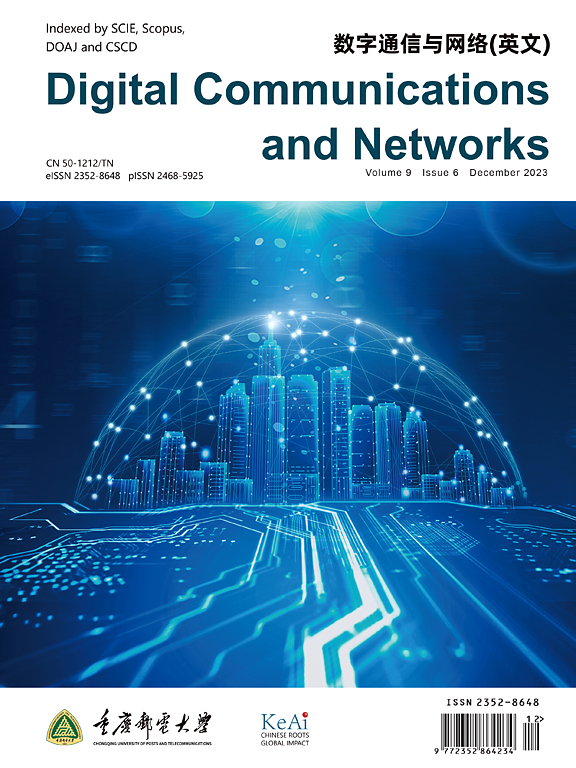非合作场景下基于联合通信参数估计的高效调制模式识别
IF 7.5
2区 计算机科学
Q1 TELECOMMUNICATIONS
引用次数: 0
摘要
现有的非合作通信模式识别器由于忽略了对通信参数(包括码元速率、码元时序偏移和载波频率)的检索,存在通用性下降、难以识别大量调制模式等问题。为了克服这些缺点,本文提出了一种由通信参数估计、星座图检索和分类网络组成的高效通信模式识别器。特别地,我们定义了一个二维符号同步度量来检索符号速率和符号时间偏移,而设计了一个星座分散退火程序来精确校正载波频率。由于这些关键参数的准确估计,可以检索到高规律性的星座图,从而简化后续的分类工作。数值结果表明,该通信模式识别器具有较高的分类精度、较强的抗噪声鲁棒性和较强的多类型识别适用性,在非合作场景下具有广阔的应用潜力。本文章由计算机程序翻译,如有差异,请以英文原文为准。
Efficient modulation mode recognition based on joint communication parameter estimation in non-cooperative scenarios
Due to the neglect of the retrieval of communication parameters (including the symbol rate, the symbol timing offset, and the carrier frequency), the existing non-cooperative communication mode recognizers suffer from the generality ability degradation and severe difficulty in distinguishing a large number of modulation modes, etc. To overcome these drawbacks, this paper proposes an efficient communication mode recognizer consisting of communication parameter estimation, the constellation diagram retrieval, and a classification network. In particular, we define a 2-D symbol synchronization metric to retrieve both the symbol rate and the symbol timing offset, whereas a constellation dispersity annealing procedure is devised to correct the carrier frequency accurately. Owing to the accurate estimation of these crucial parameters, high-regularity constellation maps can be retrieved and thus simplify the subsequent classification work. Numerical results show that the proposed communication mode recognizer acquires higher classification accuracy, stronger anti-noise robustness, and higher applicability of distinguishing multiple types, which presents the proposed scheme with vast applicable potentials in non-cooperative scenarios.
求助全文
通过发布文献求助,成功后即可免费获取论文全文。
去求助
来源期刊

Digital Communications and Networks
Computer Science-Hardware and Architecture
CiteScore
12.80
自引率
5.10%
发文量
915
审稿时长
30 weeks
期刊介绍:
Digital Communications and Networks is a prestigious journal that emphasizes on communication systems and networks. We publish only top-notch original articles and authoritative reviews, which undergo rigorous peer-review. We are proud to announce that all our articles are fully Open Access and can be accessed on ScienceDirect. Our journal is recognized and indexed by eminent databases such as the Science Citation Index Expanded (SCIE) and Scopus.
In addition to regular articles, we may also consider exceptional conference papers that have been significantly expanded. Furthermore, we periodically release special issues that focus on specific aspects of the field.
In conclusion, Digital Communications and Networks is a leading journal that guarantees exceptional quality and accessibility for researchers and scholars in the field of communication systems and networks.
 求助内容:
求助内容: 应助结果提醒方式:
应助结果提醒方式:


